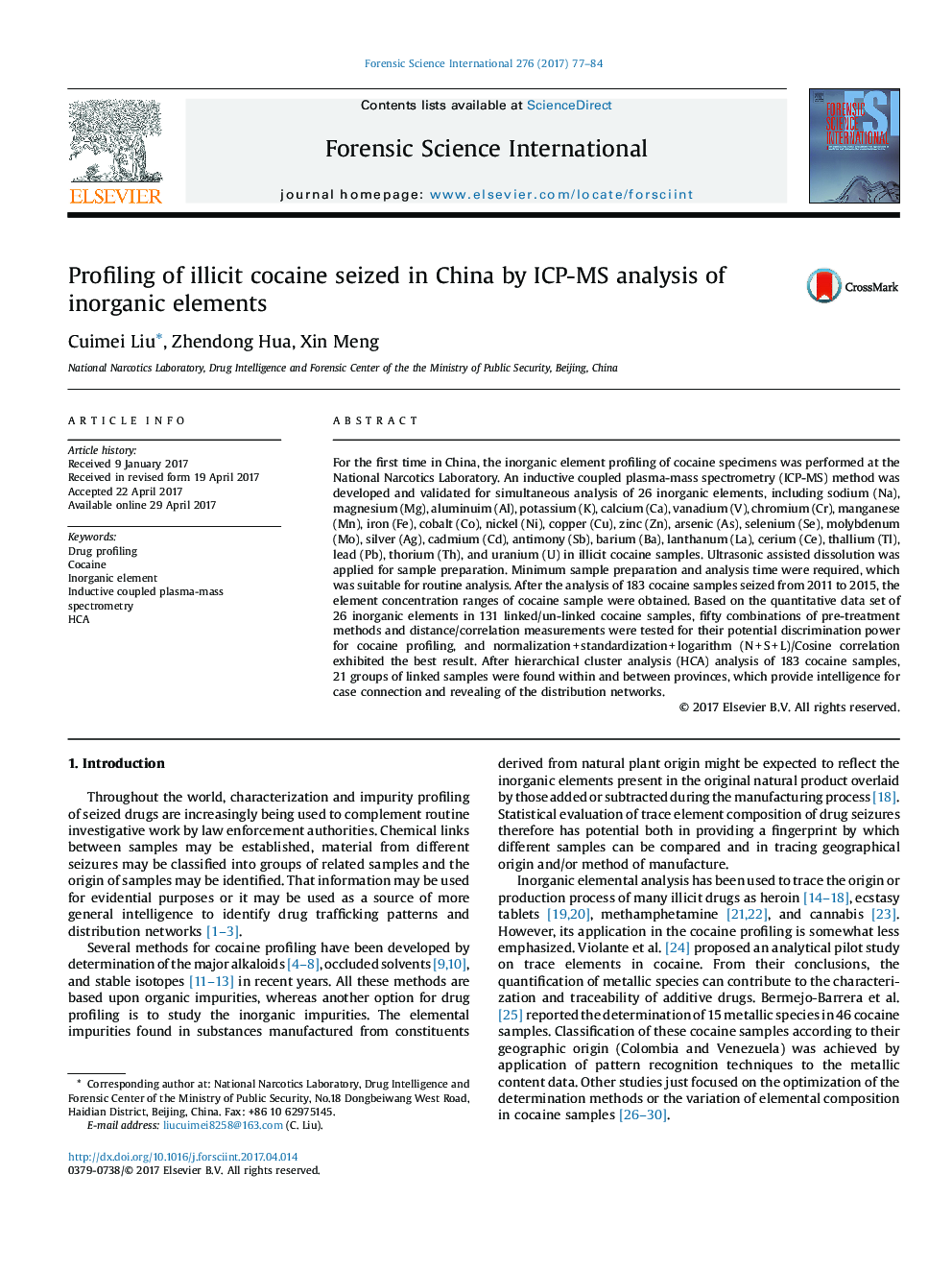| Article ID | Journal | Published Year | Pages | File Type |
|---|---|---|---|---|
| 4760299 | Forensic Science International | 2017 | 8 Pages |
â¢An ICP-MS method was developed for simultaneous analysis of 26 elements in cocaine.â¢Elements concentration ranges were obtained after analysis of 183 seized cocaine samples.â¢Combinations of data treatment methods and distance/correlation measurements were tested for the best discrimination power.â¢HCA analysis of 183 seized samples showed 21 groups of linked sample.
For the first time in China, the inorganic element profiling of cocaine specimens was performed at the National Narcotics Laboratory. An inductive coupled plasma-mass spectrometry (ICP-MS) method was developed and validated for simultaneous analysis of 26 inorganic elements, including sodium (Na), magnesium (Mg), aluminuim (Al), potassium (K), calcium (Ca), vanadium (V), chromium (Cr), manganese (Mn), iron (Fe), cobalt (Co), nickel (Ni), copper (Cu), zinc (Zn), arsenic (As), selenium (Se), molybdenum (Mo), silver (Ag), cadmium (Cd), antimony (Sb), barium (Ba), lanthanum (La), cerium (Ce), thallium (Tl), lead (Pb), thorium (Th), and uranium (U) in illicit cocaine samples. Ultrasonic assisted dissolution was applied for sample preparation. Minimum sample preparation and analysis time were required, which was suitable for routine analysis. After the analysis of 183 cocaine samples seized from 2011 to 2015, the element concentration ranges of cocaine sample were obtained. Based on the quantitative data set of 26 inorganic elements in 131 linked/un-linked cocaine samples, fifty combinations of pre-treatment methods and distance/correlation measurements were tested for their potential discrimination power for cocaine profiling, and normalization + standardization + logarithm (N + S + L)/Cosine correlation exhibited the best result. After hierarchical cluster analysis (HCA) analysis of 183 cocaine samples, 21 groups of linked samples were found within and between provinces, which provide intelligence for case connection and revealing of the distribution networks.
